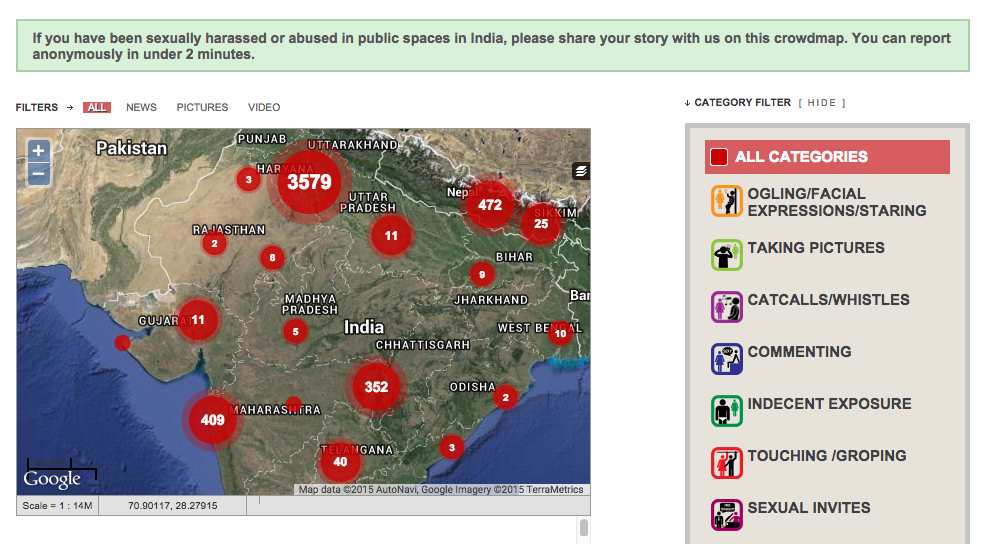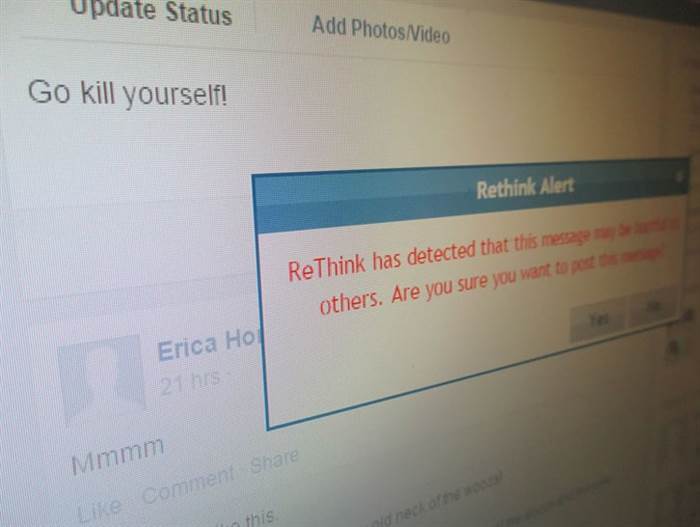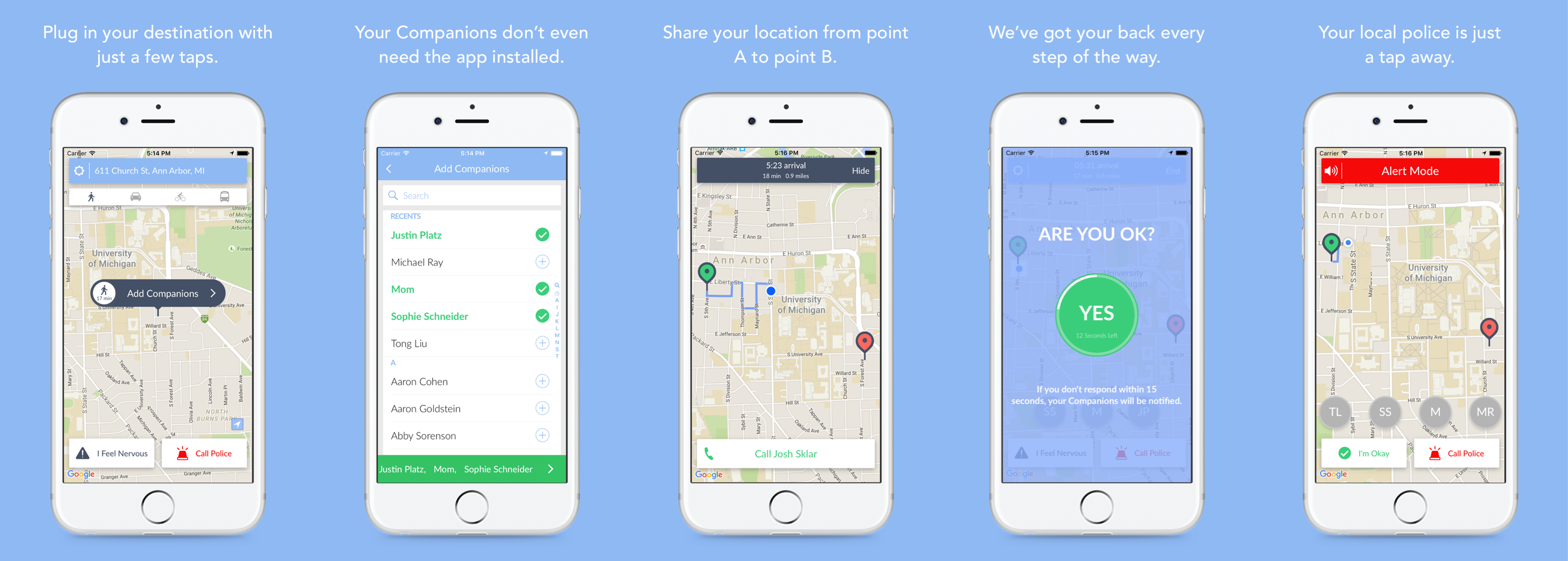Internet accessibility for all people, of all ages and in all places has unleashed unprecedented resources and opportunities. It also unlocked our digital and physical security. The sacrifice of safety is an unintended consequence of the Internet age. Can the tools that caused this vulnerability be reappropriated to make us safer?
There’s a rise in startups who think so. They are building platforms to strengthen our personal safety where we need it most — whether on the street, at school or online.
Mapping
Waze-crowdsourced data may help you avoid speed traps, but it can’t tell you the safest route. Sadly, 37 percent of Americans don’t feel safe walking home at night. A few startups are turning location tracking data into a safety resource by allowing people to transform their personal community into a connected security system.
Companion serves as a virtual buddy system that allows anyone in your address book to track your path for potential safety risks in sketchy situations, like walking alone at night. Friends or family members can track your route home in real time, and users can instantly send out an alert if an emergency arises. Mobile safety communication platform LiveSafe provides a similar tech solution, SafeWalk, for virtually walking home friends and family.

The platform also supports personal safety by mapping reported information, enabling real-time location sharing for critical situations and broadcasting alerts through international geofencing.
Other startups, like Wearsafe, are approaching this issue with a hardware solution, arguing that a real-life panic button is easier to access in dangerous situations than pulling out your phone.
Reporting
While mapping apps rely on your close network of friends and family, reporting often calls for anonymity, which means you need better technology. Survivors of assault and online bullying clamor for tech interventions that protect their identity, expose their assailants and empower the user.
The trend of startups reclaiming technology to secure personal safety is promising.
Tech nonprofit Callisto is building such a solution for survivors of campus sexual assault. One in five women and one in 16 men in the U.S. are sexually assaulted during college, but a mere 10 percent of those assaults are reported. This is partly because the in-person reporting process is retraumatizing. Most campus sexual assaults are committed by repeat offenders who the victims personally know. If repeat offenders are apprehended early, 59 percent of future sexual assaults could be stopped from ever occurring.
Callisto makes the reporting experience less daunting by enabling its users to create a digital time-stamped record, which is then electronically shared with campus administration. Survivors even have the option to withhold their report unless another student names the same perpetrator, protecting survivor confidentiality, increasing reporting and improving accuracy of reports.
Indian startup SafeCity is preventing assaults with its CrowdMap. SafeCity users anonymously report violence, harassment and sexual assault in public places and the platform aggregates these incidents into risk hot spots. SafeCity, structured as a nonprofit, aims to make their data analytics open for policy makers. With policy interventions as simple as adding street lights to reduce assaults, SafeCity is increasing proactive security measures in cities.
Intervention
Other organizations are using technology to intervene and provide support when unsafe situations arise. Crisis Text Line provides a text-based crisis “hotline” targeting teens who prefer text over voice calls. Crisis Text Line’s communication platform provides real-time responses from trained individuals in crisis. When a young person texts saying they have suicidal thoughts or think a friend has a substance abuse problem, a trained representative from Crisis Text Line immediately texts back with advice and the next steps on how to handle the situation.
Since launching in August 2013, Crisis Text Line has powered the exchange of more than 17 million messages, making it the largest open crisis data set in the United States.

Prevention may actually be the best form of intervention. Forty-three percent of teens report that they have been bullied online; thanks to technology from ReThink, there’s a working solution to stop cyberbullying before it happens.
When an adolescent attempts to post a derogatory message on social media, ReThink uses patented context-sensitive filtering technology to determine whether or not it’s offensive and gives the adolescent a second chance to reconsider their decision. ReThink’s technology is backed up with research that proves young people change their minds 93 percent of the time when pushed to rethink a decision. The same study showed that when using ReThink, the inclination for an adolescent to post bullying message dropped 65 percent.
The trend of startups reclaiming technology to secure personal safety is promising. Unlike other interventions, tech is best suited for scale. As adoption grows, we’ll be able to aggregate more data around dangerous places and spaces, making it easier to deploy proactive solutions to keep individuals and communities safe.

